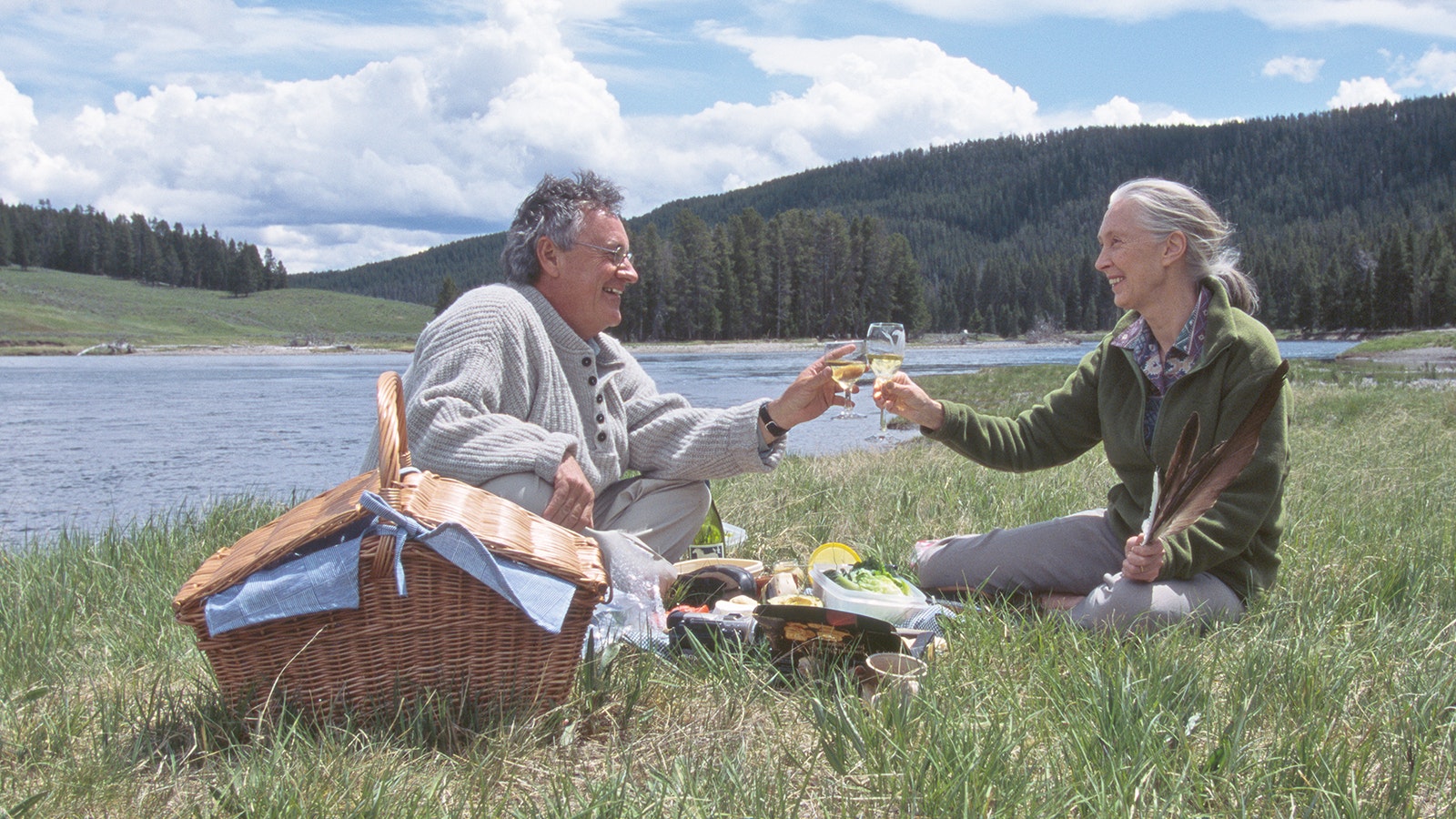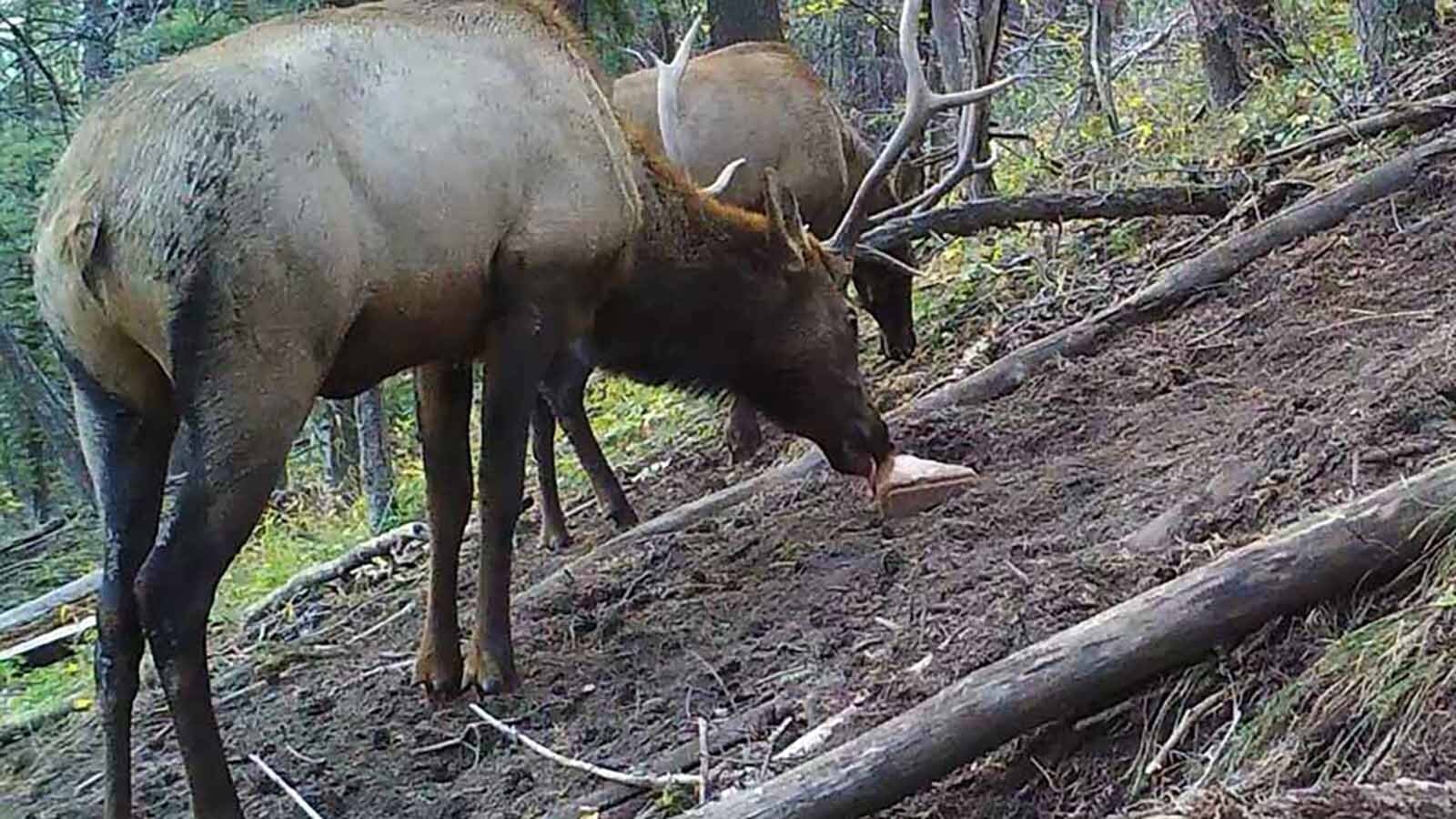To get to Adobe Town, take the Point of Rocks exit off Interstate 80 west of Rock Springs, hit the gravel roads and keep going.
And going and going.
Making good time — and avoiding a flat tire or other mishaps — travelers who know the way can get there in roughly two hours after leaving the asphalt.
The view pulling up, just past a Bureau of Land Management sign naming Adobe Town as a “wilderness study area” is worth every dusty, jarring second of the long drive in.
Descriptors like “vast,” “remote,” “isolated” or “lonely” utterly fail to describe this otherworldly place that feels like you’re stepping onto another planet.
One’s sense of space and scale is blown wide open. Time stops, smothered by supreme stillness.
And yet, closer examination reveals that Adobe Town is an incredibly dynamic place, always in motion, constantly changing.
‘You Can See The Impermanence’
During a visit on Tuesday, Rock Springs native and seasoned Adobe Town explorer John Vase pointed out how chunks of sandstone had fallen off formations and landed in a dry creek bed.
Some of the pieces had broken off at near-perfect right angles.
“You can see the impermanence,” he told Cowboy State Daily.
Wind and water are constantly chewing away the formations. That’s left many of them shaped like buildings, houses or even huge cathedrals.
Hence, the name “town” is entirely appropriate. Coming down off the overlook and walking among the formations is quite like being in town or a city.
Vase, along with close friends and fellow Rock Springs residents Paul Ng and Kurt Hensley, have been exploring the mind-bogglingly huge expanses of the southwest Wyoming high plains desert for decades.
Every time they come to Adobe Town they notice something different.
Changes in the seasons, weather, angles of perspective and even time of day, alter what the eyes soak in, Hensley said.
“It’s never the same view,” he said.
It Began In Yellowstone
Whether Adobe Town and the immense surrounding territory is part of Wyoming’s famous Red Desert could be a matter of opinion.
“We could perhaps be on the edges of it,” Vase said, as he hiked along the creek bed among a maze of rock formations.
But he considers the Red Desert Proper to be more to the north and east.
Regardless of where the true borders of the Red Desert are, the rock formations that make Adobe Town what it is have their origins hundreds of miles away, in Yellowstone National Park.
It’s thought that the formations are made up of volcanic ash.
During an ancient eruption of the Yellowstone Caldera, or super-volcano, the material that forms Adobe Town was flung all the way out to where it is today.
That eruption occurred roughly 670,000 years ago. The wind and the water have since done their work, carving the massive globs ejected from the Yellowstone Caldera into elaborate structures of Adobe Town.
Ancient Hunting Ground
The entire basin that makes up south-central and southwestern Wyoming’s vastness was once the bed of an ancient lake.
Lake Gosiute covered much of the region, along with Fossil Lake, and Lake Uinta.
Standing out in 90-degree heat and bone-dry desert air, it’s hard to fathom that this was all once deep underwater.
But even today, it’s unusually green for a desert.
That’s likely because the soil is rich with minerals from volcanic ash and lava. Vase said.
“All it takes is a thunderstorm or two coming through, and everything greens right up,” he said.
It’s possible these days to spend an entire day out in the desert and not see another person – despite being able to see for miles in every direction.
That wasn’t always the case, Vase said. It used to be quite busy here.
The area is littered with ancient arrowheads, stone spear tips and other evidence of the Clovis People. They were paleo-Indians who lived and hunted in what is now called Wyoming, going back at least 13,000 years.
For those who truly knew how to live off the land, resources were plentiful.
Along with nutritious roots, the place had, and still has abundant wildlife.
Elk aren’t normally thought of as a desert species, but there’s herds nearby.
It’s also usually teeming with pronghorn, commonly called antelope. The vicious winter of 2022 and 2023 resulted in a “90% kill rate” among them, Vase said.
Visitors saw only few scattered bands here and there on Tuesday. But does with twin fawns were among them. One doe that dashed across a dirt track in front of the desert rats’ vehicles had triplets in tow.
That’s a sign the antelope are bouncing back, Vase said.
“It’s nature self-correcting,” he said.
There were also a few sage grouse and bands of mustangs here and there.
The mustangs are a source of controversy. Some say they’re feral since they most likely descended from escaped domestic stock.
Others say they’ve survived out on the range for hundreds of years, long enough to be counted as wildlife.
But despite clashing opinions over their presence, it was hard to deny the beauty as a band broke into gallop, kicking up a dust plume that obscured those in the rear from view.
While big critters like elk were no doubt on the Clovis Peoples’ menu, they were in the Adobe Town region mostly for the small game, Vase said.
Rabbits provided meat, as well as fur for clothing, he said.
Not The Only Special Place
As fascinating as Adobe Town is, it’s far from the only spectacular feature out there.
Though it’s dry much of the year, the Bitter Creek drainage encompasses about 2,200 square miles, making it one of the largest in the world.
And even though it lacked running water on Tuesday, the channel was full of thick, green grass.
The day’s visit culminated with a stop at a place called Skull Creek Rim. There, the desert drops off a miles-long rim overlooking a panorama of badlands.
Straining eyes can see all the way into Colorado from there.
Wyoming might be primarily known for picturesque mountain ranges and rivers winding through forests and across prairies. But there’s something undeniably enchanting about the desert and places like Adobe Town and Skull Creek Rim, Hensley said.
The harsh terrain isn’t for everybody, and he likes it that way.
“The mountains are always full of people, but it’s almost always quiet out here,” he said.
Mark Heinz can be reached at mark@cowboystatedaily.com.


















